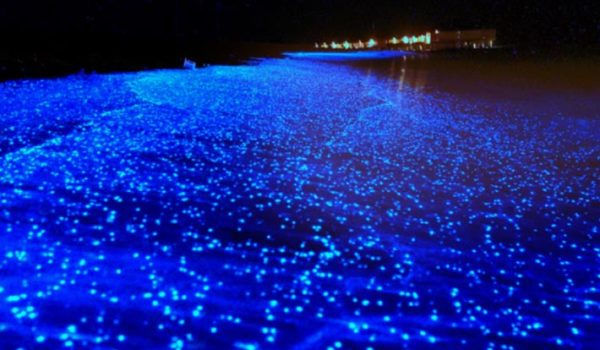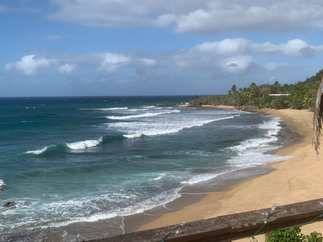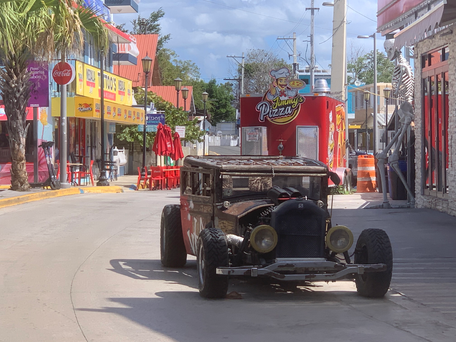The Virgins of the Caribbean
- Peter

- Feb 19, 2024
- 11 min read

Since our last update we have moved on from The British Virgin Islands and sailed to The US Virgin Islands, Spanish Virgin Islands and Puerto Rico.
Unfortunately, the weather has not been the best for us – yes, yes, I don’t expect any tears from you in our difficult situation - and maybe I should add a little clarification to my statement. Good weather for us, is a nice blue sky, calm seas and a light wind that allow us to sail wherever we want with minimum effort. It is a little pipe dream, so we have to adapt ourselves to the actual conditions for our optimum comfort. Having said this, the weather patterns for this time of year are not as expected by anyone and so everyone is paying close attention to the forecasts for sailing comfort and safety. Cold fronts are coming down from the USA and thereby disrupting the regular easterly trade winds with unexpected winds from all the other points of the compass.
This in itself has an inherent problem as the majority of good harbours and anchoring bays exist with the trade wind direction in mind (Easterly winds) and there are much fewer safe locations to protect from other wind directions.
As a consequence of the changing weather and wind direction we had to depart from our protected bay in Culebra (Spanish Virgin Islands) as the wind and swell were predicted to come from the only direction that protection was not available, typical!. A week of stormy weather with waves in excess of 3 m were expected and so our resources and time were applied to finding the best location where we could shelter. At least we had time to finish our our Zaco's Tacos, visit the beach and eat some ice cream before we moved on.
We were close to Puerto Rico at this time and were advised that “Safe Harbour Puerto Del Ray” was the best place to go. We contacted them with our usual information, boat size, insurance and expected duration of stay.
The response was “thank you we will get back to you in a few days once we know if we can accommodate you” !
Well, the storm was on the way and we could hardly wait - and how could they not see if they had space for us or not ? With a few phone calls and pressure from Ingrid, they caved in and allocated us a space.

Our allotted slip was number 1257 out of a total number of 1290 of slips. Most were occupied by private pleasure fishing boats, some catamarans and a few mono-hulls, mostly residents but also some storm sheltering visitors like ourselves. The marina was so big that there was even a “hop on, hop off” golf cart system to bring sailors and visitors from the marina office area to and from their boats. Smaller boats were housed in “multi story” berths to save on space – what a massive marina !

From here, our safe harbour, we toured the island with a rental car whilst the rough weather raged on around us as we had to do something useful with our non-sailing time.
We visited the length and breadth of the island where our trip included the vibrant capital, San Juan and the laid back, surfer’s paradise, Rincon and Boqueron on the West coast; which overlooks the infamous Mona Straits between Puerto Rico and The Dominican Republic.
We had the opportunity to visit with new friends, Monique and Tom (Catamaran ZEN) who we met in Curacao. Their local knowledge of where to anchor or find a mooring ball was of immense value to us newcomers to the region.
Checkout the cool "Jet Cars" we saw in one of the bays ! They made a lot of noise, like the jet skis, but it looked like the drivers were having fun.
We also took the opportunity to replace the battery for our electric outboard motor as a local dealer for E Propulsion was present on the Island. We hoped that this could be done through a warranty, but so far, E Propulsion have not agreed to our request.
A really great part of the pleasure of travelling is to discover a little of the history, some geography, and the unusual nuances of the places we visit.
We discovered that Puerto Rico and The US Virgin Islands are US colonies where their citizens are US passport holders but have no voting rights in US elections. The now US Virgin Islands originally belonged to Denmark who were bullied into selling their islands to the US in 1917 for the US’s strategic purposes (at a price of $25m in gold). Interestingly, Danish law still applies on these Island whilst Puerto Rico and The Spanish Virgin Islands are under US law.
Another quirk, on the BVI and USVI, is that they drive on the left side of the road whilst on the Spanish VI and Puerto Rico they drive on the right side of the road.
The reason for this goes back to the days of the Danish donkey – as they would traditionally walk on the left-hand side of the road. However, when the US took over the islands, they announced that their new Model T Fords (Like in the USA) would be driving on the right side of the road. Unfortunately, there were a number of head-on collisions between left hand side walking donkeys and right-hand side driving Americans. It was then decided that it was probably more complicated to re-educate the donkey population than the driving American population, so it was agreed that cars and donkeys would keep to the left side of the road. This tradition has persisted to the present day, even though there are very few donkeys on the road these days.
What is additionally interesting, but not really surprising is that the cars are all large, American made and with a left-hand drive – just perfect for overtaking on small windy roads where you drive on the left side of the road of the road. The road surfaces, from time to time, are a little uneven, and Puerto Rico was the only island with highways and with regular signs to warn about avoiding pot holes in the road. This was very helpful information.
Vieques, one of the Spanish Virgin Islands was a US military area, used for practice bombings and the testing of bio products such as “Agent Orange” that was used extensively in Vietnam. The locals objected, sometimes by fishermen throwing rocks at the battleships in the harbour and other protestors, on a more political basis, were deported to places such as Guantanamo Bay (which is quite close by), so the relationship between the 2 sides was not too good. In addition, the money that the US Government paid to the local government in Puerto Rico never made it to support the island's infrastructure and economy. Since as recently as in 2000, the military finally came to a realisation that they were not welcome and finally left Vieques. The island continues to get by without them, though unexploded ordinances are a continued risk and many signs warn people to be careful.
The islands each have their own beauty and we did enjoy discovering our way around the different architecture and the infusion of the US, Spanish and Danish cultures.
It is difficult to share the special experiences we have had on our voyage, without sounding too much like a tourist guide. I try and mix our feelings and experiences from the places we visit to entertain, inform and inspire you to travel and live life to the full. Though recently for us there are three stories that are at the top of our “amazing list” for quite diverse reasons and I would like to share then with you:

The first is Lameshure Bay on the south side of St Johns in the US Virgin Islands. This bay is well protected from the wind and the swell for most directions and there are a limited number of mooring buoys to keep the tourism at a sustainable level.
The bay is great for snorkelling and we saw many turtles, sting rays and various reef fish. The crystal clear water is absolutely gorgeous and we saw large barracuda finding shelter from the sun as it found shade below our boat. Our favourite tarpon patrols hang around in the evening as they are attracted by the light from the boat. If you shine a torch onto them, their eyes reflect an orange light like cat’s eyes in the dark. Their size of about a meter in length is always impressive.

On the first day of our arrival, as we were enjoying our pre-dinner aperitifs, I noticed a strange “aurora”, towards our northwest, with a point of light at the centre that was ascending into the sky. We thought at first it maybe a cloud or an aeroplane, but this point of light was travelling at speed with the ever-changing aurora about it.

At the time, we just watched and enjoyed the spectacle as this object crossed the sky. Later we discovered that there was a launch of additional “Starlink” satellites from Cape Canaveral, so our thanks go to Mr. Musk for this “out of this world” light show and our entertainment for the evening. This was the first ever rocket launch we have had the privilege to see “live and at first hand”

Our second highlight was the simple enjoyment of the old town centre of San Juan, the capital city of Puerto Rico. We did tour the town centre by car, in heavy traffic and on narrow roads as we looked for a suitable parking space. All of our google Car Park locations were full and so we were getting a little despondent as we turned to leave the old town in our search for a parking spot. Then, just by luck, as we were on another “wrong road” we found an almost empty parking lot. Even better, it was free and we just needed to be back before 6 pm, when the gates are locked.
Heading back towards the old town centre by foot, we found that we were actually still quite close, so we had plenty of time for lunch and a cultural walk around town. It was very much like being back in Europe with narrow streets, bars, restaurants and cafes that were not part of any chain franchise but just individual businesses that offer a personalised service, quality food and not deep-fried !
The historic forts were set in acres of mowed grassland and offered excellent views of the harbour entrance and the reefs on either side. In the past, Puerto Rico was the first island where fresh water was available, so it became extremely strategic and many battles took place to try and gain control of its position.
We had an excellent day walking inside and outside the ramparts of this historic old town. Our only thought, was that it would be great to spend some more time around this part of town to enjoy the restaurants and evening life.
I think that what surprised us the most was that after spending a year visiting many Caribbean Islands we had not come across such a large, well developed and well restored old town with historic buildings.
Our third highlight was initially approached by us with a degree of scepticism ! We truly detest “tourist traps” where a “moderately interesting feature” is so flooded and over run by tourists that we often wish we had never bothered to come and join the fray. The “Bioluminescent Bay” of Vieques was reported to be “amazing”, “life changing” and really hyped up as a “must do” whilst visiting Vieques.
It is actually a world heritage site, but we were still a little concerned about being drawn into the money-making tourist trap.
There are approximately 10 companies who are allowed to make the tours in this bay, by kayak or on boats with electric engine only. Tours are $65 per person with 2 people in a see-through kayak, 10 kayaks at a time and tours start at 7pm and 8.30 pm (Sounds exciting ?).
We have seen bioluminescence on the high seas through our sailing life, so I was a little unsure whether this would be worth it and I really hate being treated as a tourist.
We met at 7pm and headed off in an old school bus over the dirt roads of the national park. 20 tourists on the bus were making a lot of noise and I was beginning to think that we had made a mistake here. After 30 minutes of pot holes and narrow roads where the branches from the trees on either side were scraping the bus we finally arrived at the shores of the bay – which was actually called Mosquito Bay.
Here we were handed paddles, given a number and allocated a clear plastic Kayak. Our guide had a pink light on him, so we should follow him and not get mixed up with other groups with different colour coding. My apprehension was mounting.

As we slid slowly forwards, the world changed. A blue green bioluminescence started at the bow of the kayak and streamed under the clear plastic bottom. It was like travelling through space on the Star-ship Enterprise with the stars streaming past.
Each time the ores were dipped into the water there was an explosion of bio luminescence that lasted several seconds.

When we stopped on the water in the pitch black of the night we could see the traces of bioluminescence in the water as shoals of fish swam by. We saw them zig zagging as they chased other smaller fish to eat.
I think I have never seen such a sight in my life ! The bioluminescence of the waves on the ocean or agitating the water with my feet is beautiful, but cannot be compared to the density of bio activity we saw in this bay. When we dipped our hands into the water and pulled them out, the luminous activity of the micro-organisms could be seen just running down our hands and arms.

It was an experience I never imagined and I can hardly believe the beauty of what we saw – never mind putting its description into words.
My photographic techniques were too poor to capture this amazing experience and my thanks to Varsha who we met on the trip and kindly shared her photos and videos with us and also some from other sources.

The reason for the specific beauty in this bay is a mix of many different components that build together and include its narrow entrance, the orientation to the open sea and the natural nutrients that exist in the bay to feed the micro-organisms and allow them to multiply in the numbers we had in this location. Mosquito Bay has one of the highest densities of dinoflagellates in the world – these are the main plankton forms that give the bioluminescent light.
Our feared “tourist trap” was not what we expected and our guide was very knowledgeable on the subject of bioluminescence and the environment, explaining everything to us and answering any questions that we had.
This is one “tourist trap” that I would recommend to anyone, knowing that you will be as awestruck as we were with this experience.
From The Virgin Islands, we have moved onto Saint-Martin or Sint Maarten, depending on which side of the border we are on. We are in the lagoon to shelter (again) from the rough seas and high winds as the cold fronts keep coming down from the USA. Depending on the wind direction we are either in the Dutch or French side. Our mobile phones think that one minute we are in Curacao and the next in St. Barthelemy. This is actually quite important as the French mobile phone service providers consider St Bart's or Saint-Martin to be French and therefore we have our normal European rates (i.e. zero) for phone calls and data whilst the Dutch side charges European Subscribers an arm and a leg for any incoming or outgoing calls. Thank goodness for Whatsapp !
From here we started to discover the Dutch and French Caribbean Island. See our next blog on the sharks and monsters we discover…….
I also have a little gallery of photos that we loved but did not have space to share within the body of the blog:
























































































































































Comments